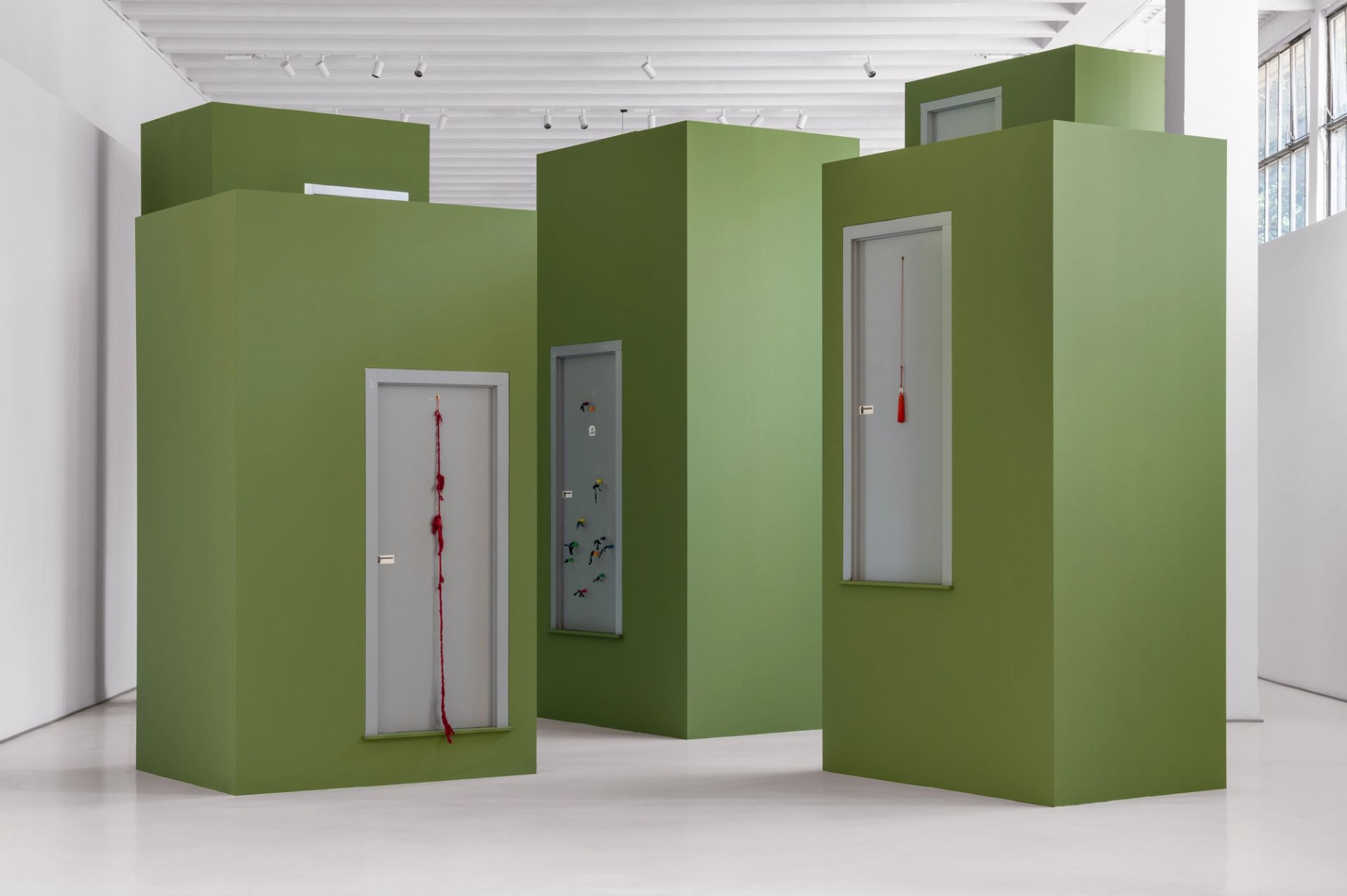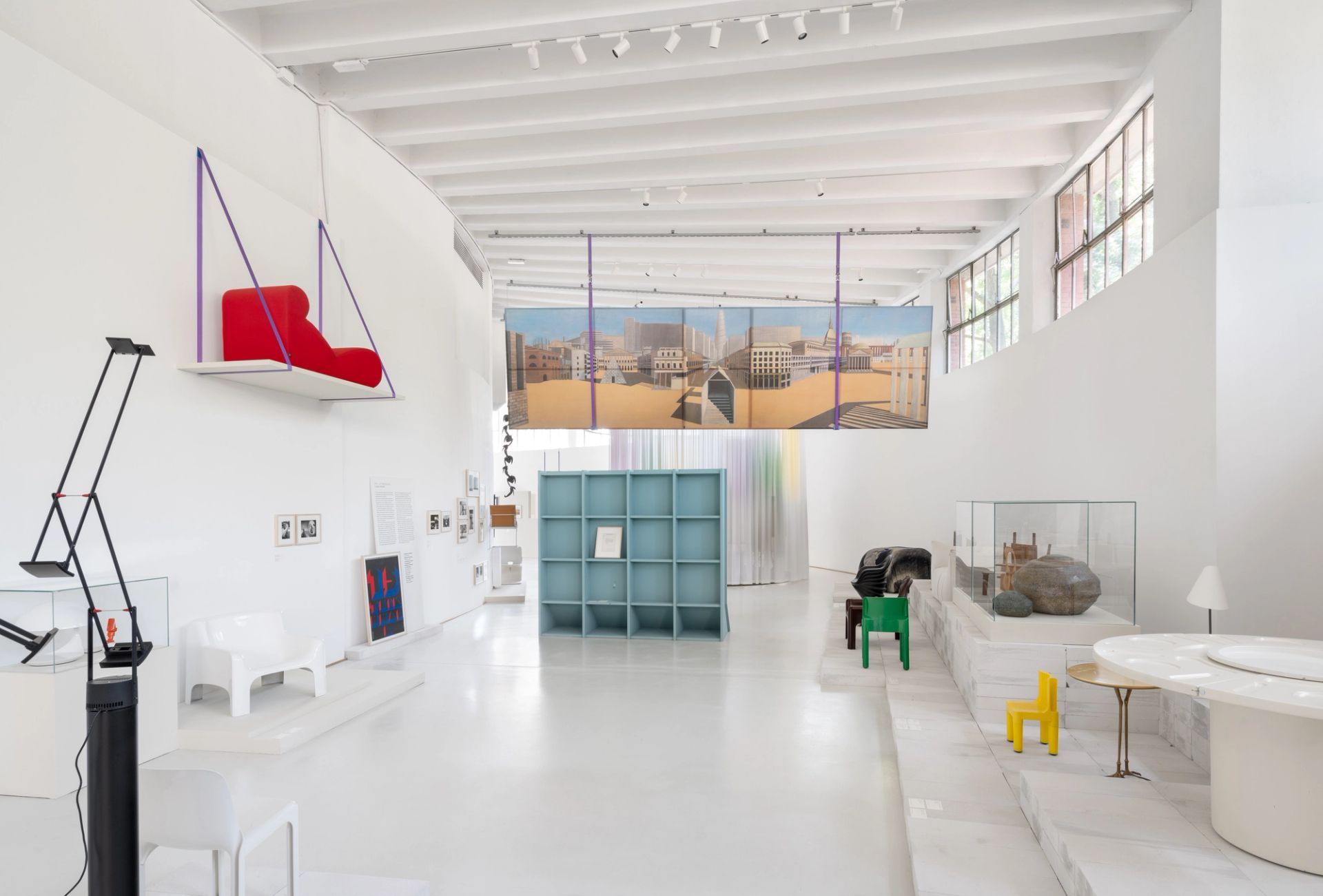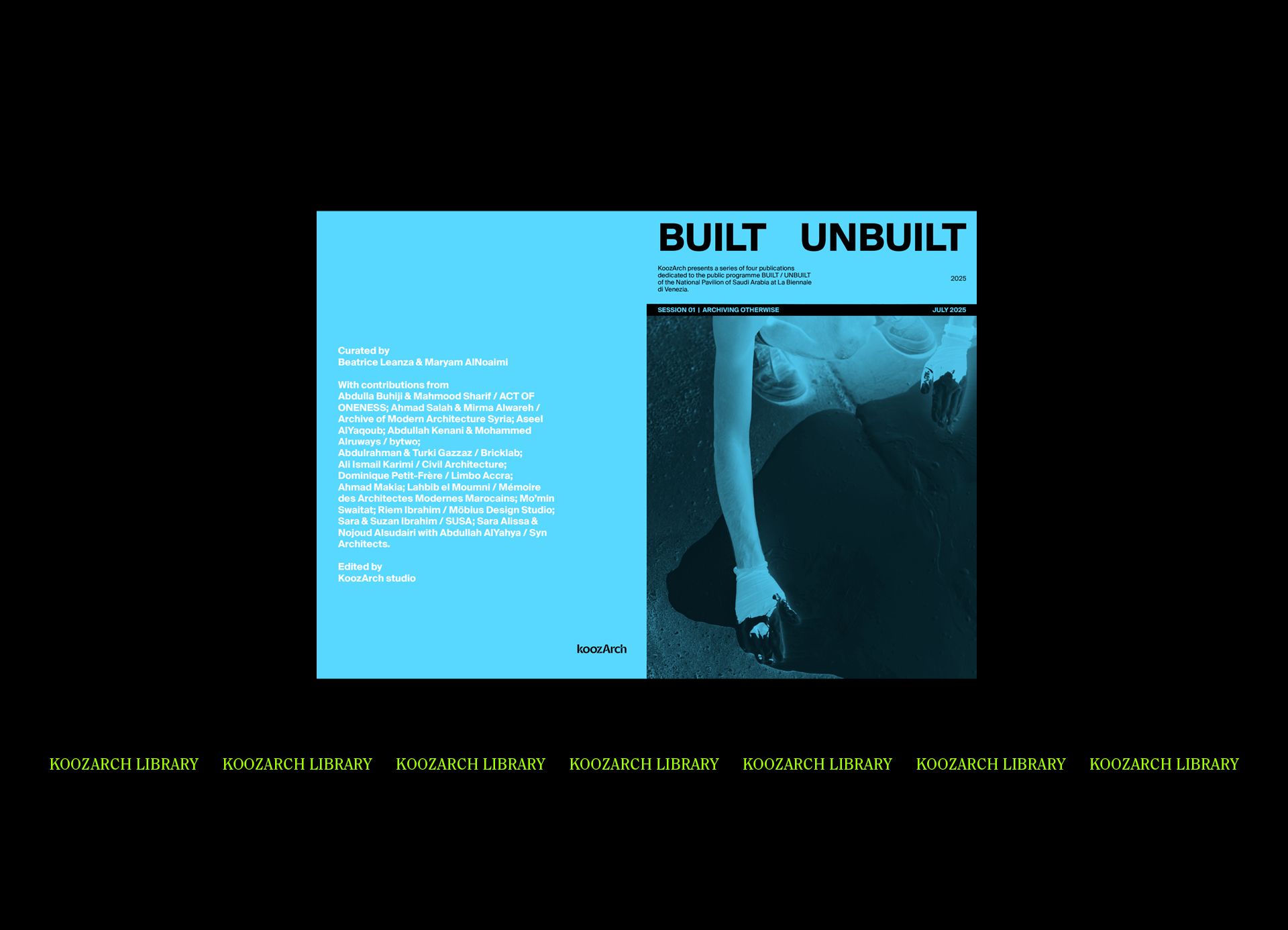Conceived within the context of the 23rd Triennale Milano International Exhibition, Unknown Unknowns. An Introduction to Mysteries, "La tradizione del nuovo" curated by the Triennale’s Design Museum director Marco Sammicheli, explores how Italian designers and manufacturers have, through research, tested and explored the limits of design. Stemming from the collection of the Triennale and the archives of past International Exhibitions, the exhibition brings together works, installations, documents, creative processes and experiments that have contributed to the development of both Italian and international society by touching on sociological, commercial, ecological, technological and cultural aspects which characterised the years in between 1964 and 1996.

23rd Triennale Milano International Exhibition "Unknown Unknowns. An Introduction to Mysteries". Marco Sammicheli, La tradizione del nuovo. Exhibition design by Zaven. Photo: DSL Studio
KOOZ What informed the choice of the exhibition title “La tradizione del nuovo” (The tradition of the new)?
MS The title for the exhibition was born out of an exchange with Luciano Anceschi. It refers to the series of books (published by Paravia) that his father wrote to discuss a typical attitude of literature towards the present. The title also relates to Harold Rosenberg’s “The Tradition of the New”, where the philosopher and art critic puts forth an attitude which characterised the architecture scene in Milan, occupied with the reconstruction of the city after the Second World War. I thought this was a very fitting definition, almost sartorial, in respects to this strong attitude towards the act of repetition embedded within the notion of tradition. The latter is here understood as the repetition of research and the search for novelty.
Historically, Italian design was never associated with a specific codified industry but was rather born out of the will and energy of two types of “pirates”: the designers and the entrepreneurs who went all out and boldly confronted and explored the future. Frequently the latter had either constructed their reality ex novo or came from entrepreneurial dynasties - towards which they nurtured a certain frustration - and wanted to create a new business.
Italian design was never associated with a specific codified industry but was rather born out of the will and energy of two types of “pirates”: the designers and the entrepreneurs who boldly confronted and explored the future.
When observing the Italian design scene of the last 40 years, and the various generations which have been part of its story, I noticed this recurring attitude of exploration of the unknown and decided that “The tradition of the new” would make for a very fitting slogan for the realm of design which, going back to Anceschi and Rosenberg, in my view is a form of contemporary literature, a combination of material culture, technology and behavioural studies.

23rd Triennale Milano International Exhibition "Unknown Unknowns. An Introduction to Mysteries". Marco Sammicheli, La tradizione del nuovo. Exhibition view. Photo: DSL Studio
KOOZ Through hundreds of artefacts and projects which span the 70’s, 80’s and 90’s, the research-based exhibition presents how Italian designers have explored the unknown to imagine new and alternative futures. What prompted this line of enquiry and approach? Why and how is it relevant today, amidst our contemporary design landscape?
MS I wanted the exhibition to exist as a historical narrative where the visitor could experience a diverse approach to the potential and power of the unknown. In this sense, and differently to the exhibition curated by Erisilia Vaudo upstairs, “La tradizione del nuovo” is centred around the unknown knowns, it presents trial and error and infinite research undertaken by Italian designers and manufacturers in the process of going from unknown to known. The exhibition can be understood as a catalogue of diverse researches.
Amongst the more than 350 artefacts exhibited, there are numerous prototypes and failures which did not reach commercial success but were pivotal case studies for both the disciplines of design, literature, and media.
Amongst the more than 350 artefacts exhibited, there are numerous prototypes and failures which did not reach commercial success but were pivotal case studies for both the disciplines of design, literature, and media. Many of these objects, these failures are interesting examples as, although not commercially viable, they either inspired generations, or were stepping stones for both the designers and brands in the development and making of other products. To this end, the mistakes are here celebrated as the bricks which led to the construction of new and diverse visions and which - similarly to a psychoanalytic reading - are presented as embedded with a great amount of energy. This energy still lives on today and is also evident within the numerous questions raised by the past editions of the International Exhibition at the Triennale, some of which are to date left without complete or defined answers.
The exhibition is, thus, structured as a motor highway divided into two parts which share a constant reference to human behaviours and to Italian design as a practice which has the human figure at its centre.
On the left-hand side, one is confronted with a selection of past Triennale exhibitions from 1964 to 1996, each specifically selected because of the novel questions raised, which remain relevant and unanswered today. For example, the Triennale of 1964 on “Tempo libero” (leisure) explored “free time” at a time when there was a very clear distinction between time for work, time for rest and time for leisure or entertainment (in italian “tempo della festa”). The questions raised by that exhibition appear ever so relevant nowadays when these distinctions have long fallen, and we find ourselves serially procrastinating with social media at work whilst obsessively checking our emails on our time off. At a time when digitalization has fundamentally reduced and altered our relationship with time, today’s society has a chronic disorder with work whereby we think that it is ok to send an email at 1 o’clock in the morning or to fool around whilst waiting for that 10 AM email. When looking at Tinto Brass' video commission for the 1964 Triennale, it is quite evident that we have not yet been able to fully respond to the questions raised by the exhibition.
On the other hand, the central bay features a series of in-depth thematic explorations structured around three orders: first monographs featuring the works of Alberto Meda, Clino Trini Castelli, Clido Treni Castelli, Claudio Salocchi and Exhibition Design Group; Second, thematic islands structured around notions of gravity on the body and how it can function as both a unitary spatial and psychological unit for the act of design, and the power of the editorial realm as space which could welcome new visions which neither the industry nor academia were able to process. Thirdly, we have phenomenological studies on the exploration of “environments” which characterised the shift of the 1970s, when Italian designers shifted from designing single pieces to entire furniture systems, to the “horizons” of the 1990’s with the atomization of Italian design into more families. This ultimately leads to the 1990s and the role of music, as I thought it was necessary to transmit this idea by which when design becomes digital it develops into connections and services and loses its materiality. This part of the exhibition features examples where musical composers collaborated with architects and designers to go beyond mathematics and music, pushing the limits of a composition.
To go ahead one needs to look back to understand what has been achieved, what has not worked and what one can make work thanks to new technologies and paradigm shifts.
KOOZ Beyond the constant reference to the human figure, what threads exist between the timeline and the thematic islands?
MS Imagine yourself swimming in a pool and having the possibility of resting on the “lifeline” which, in the case of the exhibition, is the timeline that unfolds on the perimeter. Frequently, the thematic islands are achronics and feature the work of a multitude of designers from diverse times as well as belonging to varied categories.
What happens within the space does not always have an immediate connection because I believe, maybe with a bit of presumption, that these thematic explorations could be read without a temporal reference. For example, the notion of gravity as the ultimate designer and which actively participates in the functionality of an object, is here put forth through the presentation of a series of projects as the Parentesi by Achille Castiglioni (1971) or the Giogali by Angelo Mangiarotti (1967). Similarly, ideas tied to the notion of the body as spatial unit of measure, or the psychological disorders experienced by an individual - and the creativity that these can yield - were present both in the 1960s and in our contemporaneity.
Beyond the connection between central bay and perimetral wall, another important element, when developing the exhibition, was the directionality of the visitor. To this end, and in collaboration with the architecture studio Zaven, we developed an exhibition which invites the visitor to look back. This is to reinforce the idea that to go ahead one needs to look back to understand what has been achieved, what has not worked and what one can make work thanks to new technologies and paradigm shifts.
KOOZ Part of the installation also presents magazines such as Domus, Casabella, Ottagono, Modo, Casa Vogue, Blueprint, Stile e Industria. What role did these editorial projects play in fueling the exploratory nature of those years and fostering a thriving debate on design and its potential?
MS Fundamental! The exhibition also literally features the reproduction of an edicola, which is here positioned in front of a bed, and of an article featuring a series of photographs taken by Mirio Zagnoli for Modo. The model is photographed six times, each time illuminated by an external device, whether this being a car light, a streetlight, a newspaper stand light, a computer screen, or a television screen. If one thinks how often we are illuminated by the screens of our devices, one realises how visionary the article was. It narrated how much an artefact can not only communicate information but can also engage with us in an extremely consolatory and intimate fashion.
Within the edicola, magazines are open on a series of specific narratives. For example, an advertisement page featuring the Nathalie bed designed by Vico Magistretti allows us to retrace the history of the artefact. Also, the founding of Flou, which was born within the vacant premises of the Interflex factory, when the question of a system of bed and linens which could withstand the bed’s springs brought to the necessity of creating a bed whose cover could be removable. With this idea in mind, the Kartell centre commissioned Vico Magistretti (as designer) and Rosario Messina (as seller) to produce and launch Nathalie and, with it, the story of Flou commences. It is one of the most excellent beds’ manufacturers worldwide.
Beyond the Italian press, the international magazine Blueprint is showcased open on a page dedicated to Romeo Gigli. The latter exemplifies the creative flux that the featuring of Italian design on international journals and news outlets brought to the country. In fact, the article on Blueprint was at the time read by a young Alexander McQueen, who then chose to come to Milan and work with Romeo. This is just one of the numerous narratives of international creatives who then settled in Milan adding the international flair which made the city the international design hub that it is today.
The magazines thus operated as bridges that not only hosted a series of narratives which neither universities nor industries were able to include or capitalise upon - through, for instance, the investment in a product or with a scholarship - but they also enabled these realities to first become real on paper, and then became real as tangible objects within our world.
This is also one of the reasons that led me to KoozArch. Today we are surrounded by a world of media where I, at least, no longer feel the legitimacy that a magazine can offer. In fact, they have entered a tortuous journey between communication and sharing. Numerous among the prestigious magazines presented within the edicola at the Triennale either do not exist anymore or do not have any longer the power of generating a debate. One thereby experiences a feeling of curiosity when coming across a project like that of KoozArch, which emanates authentic energy similarly to the energy stemmed at the early stages of these grand magazines.
One thereby experiences a feeling of curiosity when coming across a project like that of KoozArch which emanates authentic energy similarly to the energy stemmed at the early stages of these grand magazines.
KOOZ How and to what extent the exhibition touches on the relationship between the Triennale and the city of Milan? In what ways did the city and institution lead to specific synergies and projects?
MS Within the realm of Italian design, it is hard to include other sites beyond Milan. There are, of course, production sites that correspond to industrial neighbourhoods or cities where universities have developed significant ideas such as, for instance, Florence, Bologna and Venice. Nonetheless, Milan is still today a central node as it is the city of communication, the city of the fair, the city of debate, the city of the exposition and the city of research. Events like the Salone del Mobile, sites such as the Triennale and the Politecnico makes it the design node it is today. Design is, therefore, always central to those working within the industry, but also to people as my mother. If you take the Milanese subway you understand that there are elements which have been designed so well, beyond any superfetation, whilst if you visit a specific piazza, you understand that the culture of design belongs to this city. Even when there have been important figures in design who wanted to retain their geographical independence by remaining in cities like Naples or Turin, they have passed by Milan either for academic, commercial, communication or cultural purposes as the city offers something whose combination could not be found in other cities.
The exhibition in this sense indirectly talks about Milan and how the city continues to be a port. Amongst the artefacts which are shown, the visitor is welcomed by a small painting by Hervè Telemaque who, throughout the 1960s, gravitated around Milan and was represented by the Galleria Marconi. The painting is a small sailboat winch, it could also represent one of those iron elements where one docks their boat at the pier. As I also told the mayor of Milan when he visited the exhibition, this city has been and should remain a happy landing for generations of young designers who look for the realisation of their passions through academia and design.
KOOZ What are your hopes for both a designer and amateur visiting the Triennale?
MS A great curiosity that distinguished four generations of designers who have operated within the economic and marketing industry and have always tried, with great humility, to interpret society. I hope that a young designer coming out of this exhibition would gain awareness of his or her role within this society, and will feel the need to nurture his or her own imagination and culture because a good designer today is first and foremost a good intellectual; a person who looks at the world with curiosity and never stops studying.
It is not a coincidence that individuals such as Alberto Meda have been presented, within the exhibition, through a series of drawings and sketches - many of which were not produced but rather became patents. Maybe it is the summer air, but the façade of Leon Battista Alberti in Rimini comes to mind. This idea of the unfinished as a project is able to transmit curiosity and the will to continue to make, to design.
Bio
Marco Sammicheli (Fano, 1979) is curator of design, fashion, crafts sector at Triennale Milano and Superintendent Museo del Design Italiano.
He's been working as International Relations chief officer at Triennale Milano since 2018, where he's supervising the International Exhibition program in collaboration with the BIE - Bureau International des Expositions.
After graduating in Communication Science from the University of Siena and specializing in History of Design at the Bauhaus in Weimar, he earned a doctorate in design and technology for the development of cultural heritage at Politecnico di Milano. He has been visiting lecturer at the Shenkar College of Engineering and Design in Tel Aviv and at the Design Center in Unisinos, Porto Alegre.
Federica Zambeletti is the founder and managing director of KoozArch. She is an architect, researcher and digital curator whose interests lie at the intersection between art, architecture and regenerative practices. In 2015 Federica founded KoozArch with the ambition of creating a space where to research, explore and discuss architecture beyond the limits of its built form. Parallel to her work at KoozArch, Federica is Architect at the architecture studio UNA and researcher at the non-profit agency for change UNLESS where she is project manager of the research "Antarctic Resolution". Federica is an Architectural Association School of Architecture in London alumni.





